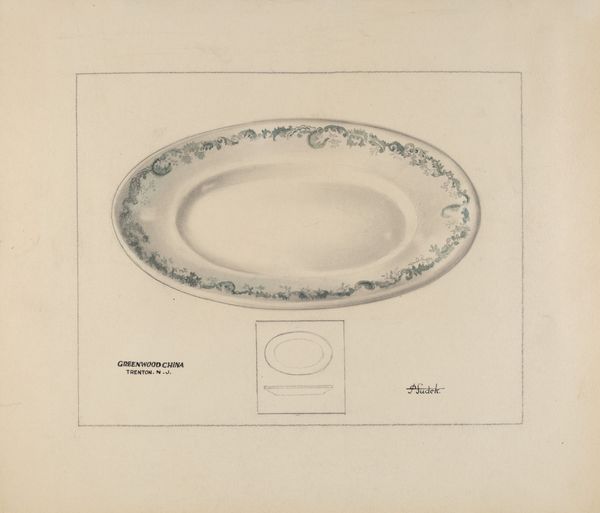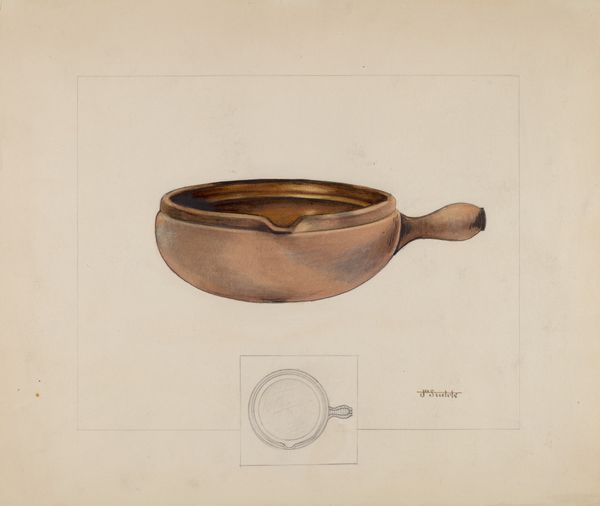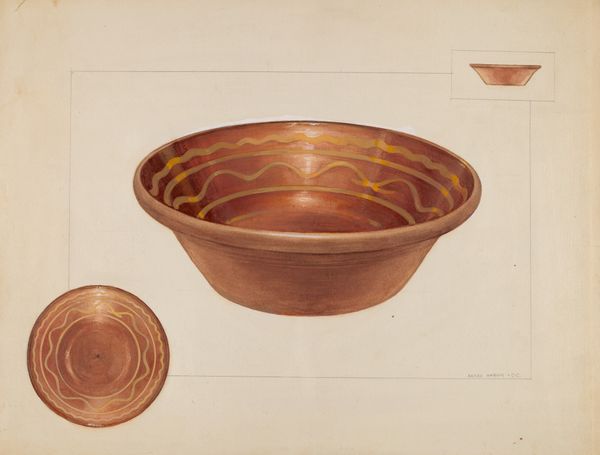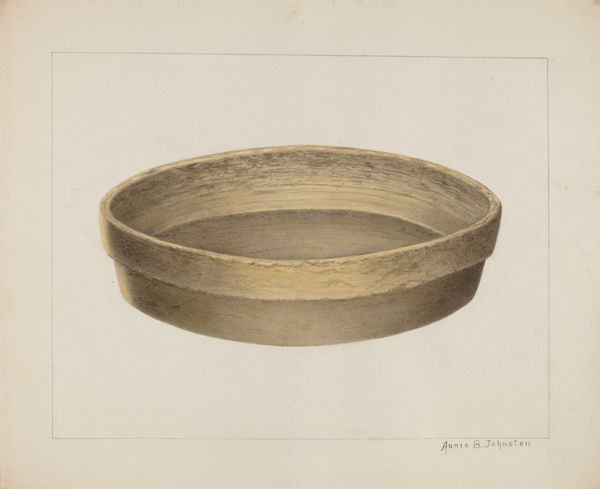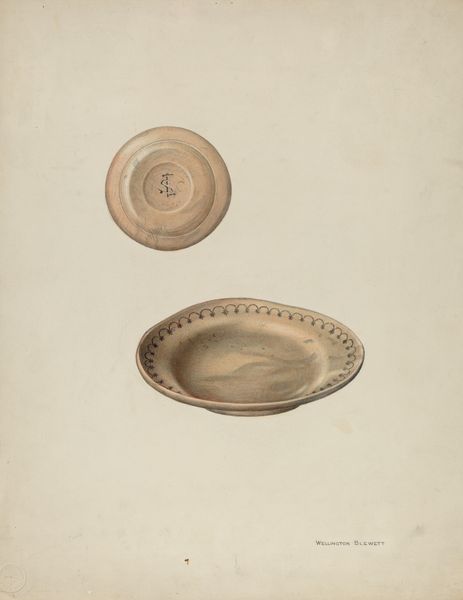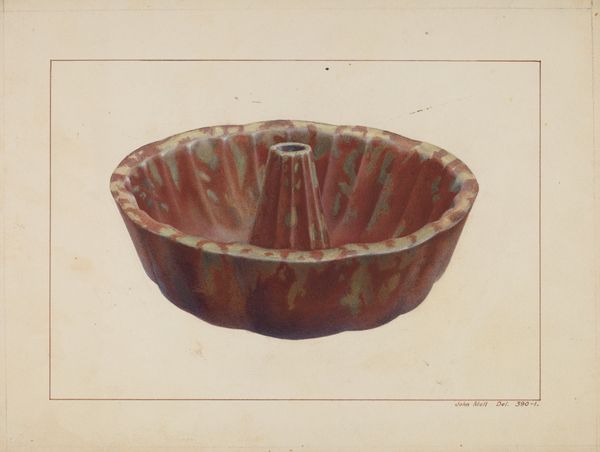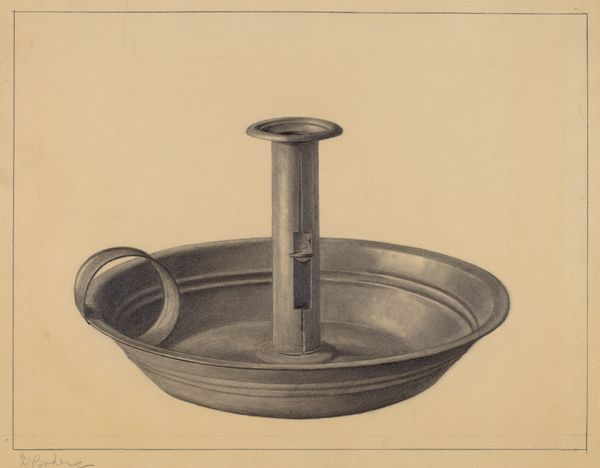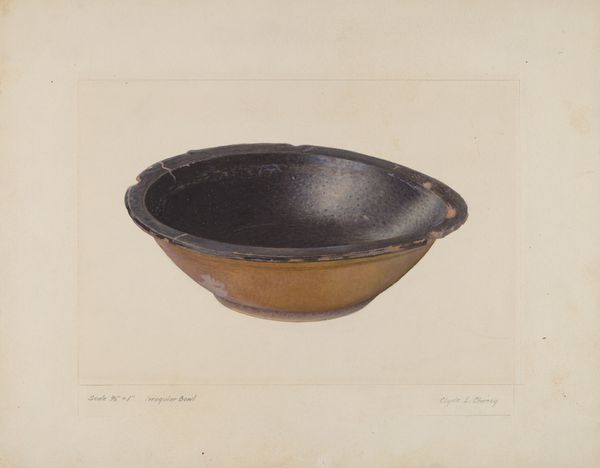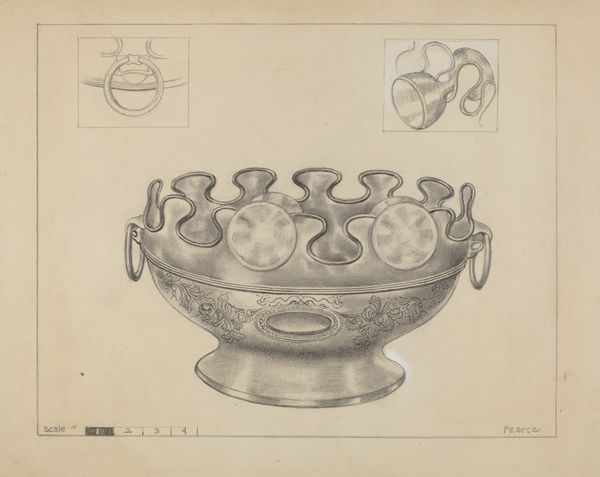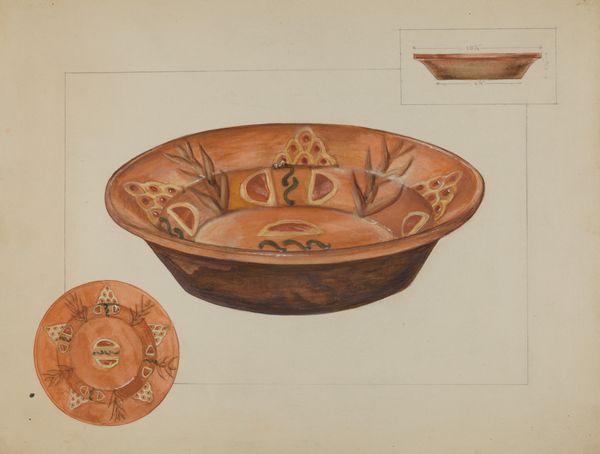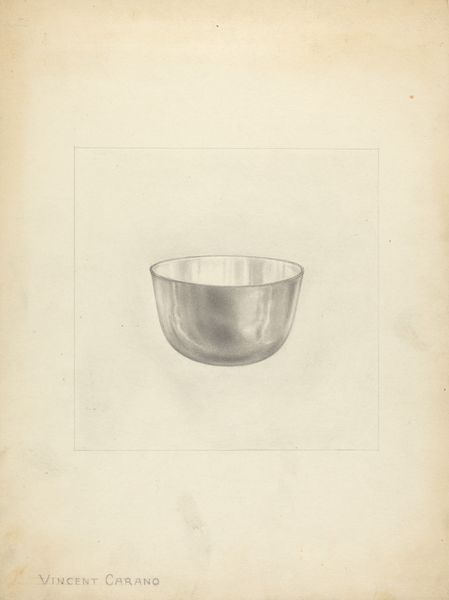
drawing, watercolor
#
drawing
#
watercolor
#
realism
Dimensions: overall: 23 x 28 cm (9 1/16 x 11 in.) Original IAD Object: 1" high; top: 3 3/4" in diameter; bottom: 3" in diameter
Copyright: National Gallery of Art: CC0 1.0
Curator: Alfred Walbeck rendered this exquisite study, titled "Snuff Box," between 1935 and 1942 using drawing and watercolor techniques. Editor: Initially, it's the subtle luminosity that draws me in—a compelling interplay of light and shadow articulating the form. Curator: Walbeck’s piece highlights the intersection of functional design and artistic expression. Snuff boxes were historically ubiquitous among those with disposable income, tools in tobacco consumption—thus markers of class and leisure. Walbeck presents the object as both a utilitarian vessel and a subject deserving careful artistic rendering. Editor: Yes, precisely. Note how he carefully details the concentric rings on the lid, echoing through its depth, contrasting with the basin's almost seamless surface below, inviting touch, suggesting both function and an engagement with geometric formalism. It's fascinating how the choice of color and form subtly transforms a commonplace item into something almost monumental. Curator: Considering the socio-economic circumstances of the era during which this artwork came to be, its existence and careful rendering become especially intriguing. Editor: Do you believe the realism acts as a form of preservation, or does it elevate the box to something beyond a simple container? The attention he dedicates to perspective, proportion, is nothing short of devotional. Curator: The attention bestowed upon this snuff box elevates the labor, skill, and the historical context of snuff consumption into the artistic subject matter itself, making explicit the relations of production and culture, thereby collapsing historical distinctions between art and craft. Editor: So, beyond merely depicting an object, the work seems to probe into the essence of its function, questioning utility itself. The light reveals both its present state and the countless uses imprinted onto it, implying an intimate narrative beyond its purely aesthetic qualities. It transforms our understanding. Curator: Ultimately, Walbeck provides us not merely a glimpse into a bygone custom, but invites us to investigate the nuanced relationship between societal habit, material objects, and representational practice, asking us what—and who—truly matters. Editor: An invitation, then, to consider art not as mere object of study, but a gateway into understanding cultural echoes and forms of material beauty in the simplest things.
Comments
No comments
Be the first to comment and join the conversation on the ultimate creative platform.
